IHS Markit has released a report titled “Imagining the ‘Apple Car'”, which speculates on some components and technologies. This is actually very interesting.
The article is mainly divided into:
- Autonomous driving
- Connected systems, mobile applications and V2X
- Battery system
- Vehicle structure and materials
- Semiconductors
- Software
- Interaction, reality and AR HUD
Due to Apple’s lack of official explanations on the progress of car development and the strong confidentiality of Apple cars, there are too many unknowns regarding the production location, potential partners and expected production volume.
It is necessary for us to lay out some speculation or information updates in advance.
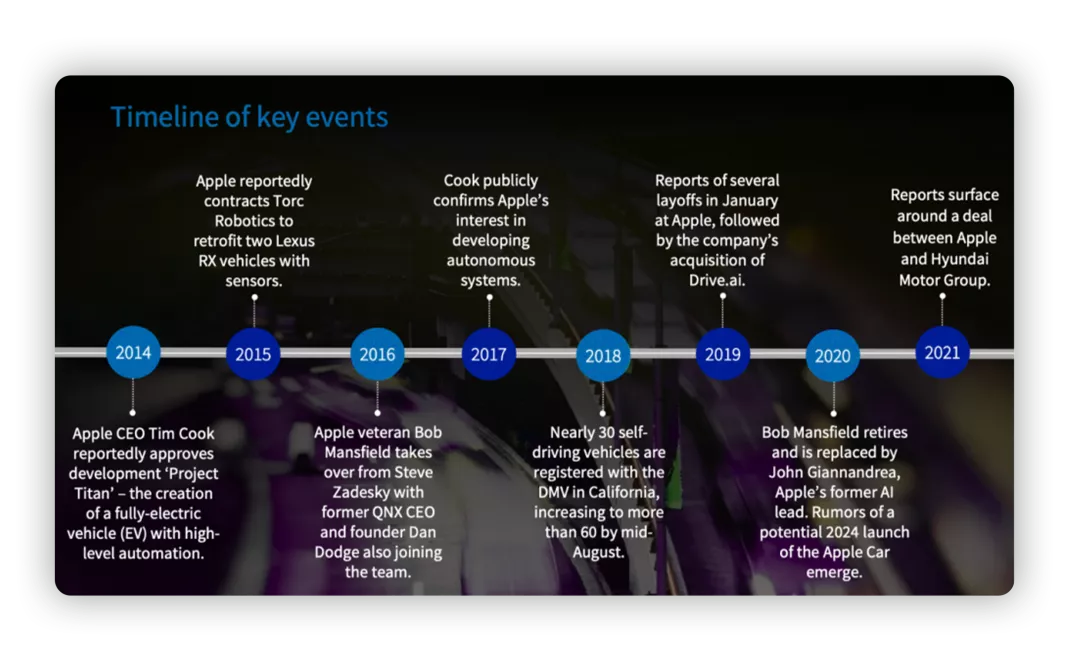
Will the Apple Car be mass-produced? What is the bottleneck?
- Will the Apple car go into production?
In Apple’s history, there have been many explorations of crossing different fields. However, for Apple, creating revolutionary products and achieving excellence is itself a high standard. This makes Apple strategically abandon or even terminate the release of certain products in forward-looking exploration. Any product must have a successful grasp before proceeding to the next step.
Apple has been exploring the automotive field since 2014, and combined with its exploration in the automotive entertainment system field, from a strategic perspective, Apple’s entry into the automotive industry is valuable – especially when a giant with revenue of more than 300 billion US dollars cannot achieve meaningful growth in the traditional electronic consumer market.
Personally, I think the automotive industry is actually the pillar of various industrialized countries around the world. If Apple enters this industry, it may also cooperate with European and Japanese car companies to stabilize the personnel in the manufacturing industry. The original car companies will become OEM factories.
- What will the Apple Car look like?
From Apple’s tone of voice, if the car is aimed at family use, it may be slightly larger than the Model Y, comparable to the Model X, and it should not be possible to be smaller in size. Apple’s past success image is centered on providing the best user experience, and its product design has a user-friendly and simple interface. In some cases, when it expands the boundaries in design or performance, it will bring convenience to consumers.Through the Apple car patents and California autonomous driving test results, if Apple can launch, there may be some breakthroughs in intelligence and autonomous driving, as well as some innovations in interior design and features. According to media reports, Apple’s car will debut in 2024, especially Taiwanese media being optimistic, taking into account time constraints related to supply chain, engineering design, and manufacturing cycles, the time window is quite tight.
Impact on the Automotive Industry
If Apple chooses to cooperate with traditional car companies (depending on both parties’ willingness), it can accelerate the volume production of Apple cars, focus on customer-oriented features and services, and shorten the time to market. Apple needs to strictly control the development and integration of hardware and software, so it is highly likely to work with partners such as Magna and/or LG for the contract manufacturing of key components.
Technological Speculations
Autonomous Driving
The plan to launch L4 level autonomous driving cars is a gamble, with regulatory uncertainty around whether passengers can be transported, requiring further approvals from regulators.
Based on the autonomous driving-based MaaS business model, it can support Apple’s differentiation and focus on content and user experience. Apple will most likely launch a more advanced autonomous driving assistant and enable deep cabin interaction.
Note: The core formation of Apple’s car is the embedded design of very large autonomous driving development. This must be a very core aspect of thinking about how the vehicle can be autonomously driven. I personally tend to think that this is the biggest highlight.
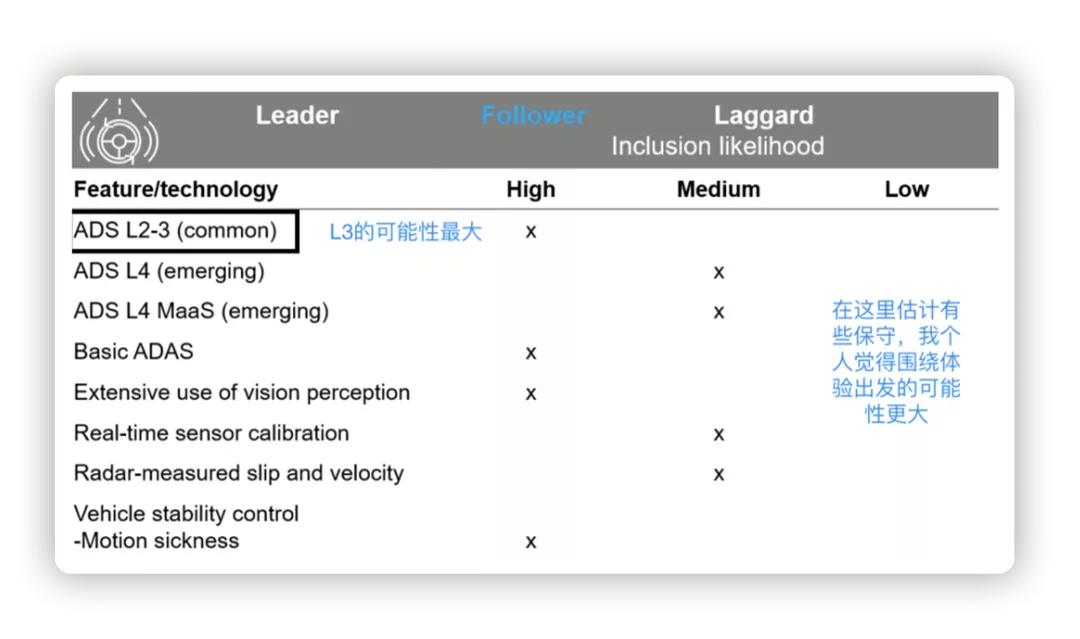
Vehicle Systems, Mobile Apps, and V2X
Apple’s application ecosystem and cloud platform are the most critical elements of Apple’s car. Therefore, embedding its app store in the car is inevitable. Providing a developer-friendly framework for certifying in-car apps is a challenge.
Apple is likely to develop V2X as a core element and one of the most active areas in Apple’s patents, covering navigation interfaces, message sending, resource selection, and even communication using non-standard road signs.
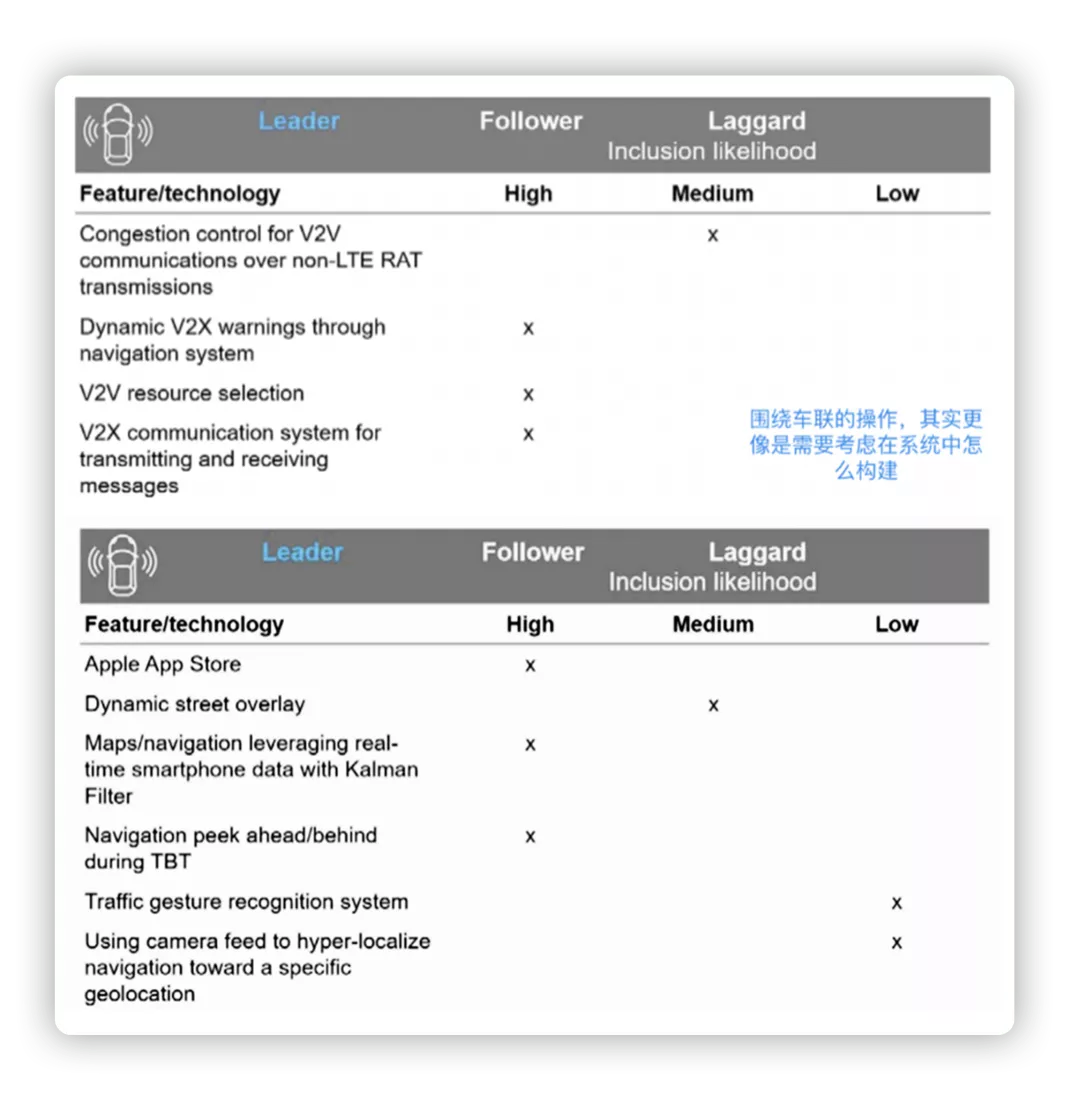
Battery System, Materials, and Body Structure
From previous leaks, Apple tends to build around lithium iron phosphate and construct a battery system using self-defined battery cells. Currently, there is no specific information to support this disclosure. Some conceptual designs are being carried out by subcontractors in China, Japan, and South Korea.The possibility of using LG Magna e-Powertrain for future vehicles remains. As for the body material and overall safety, including the transition from a smartphone-sized design to a much larger-sized car, we remain hopeful.
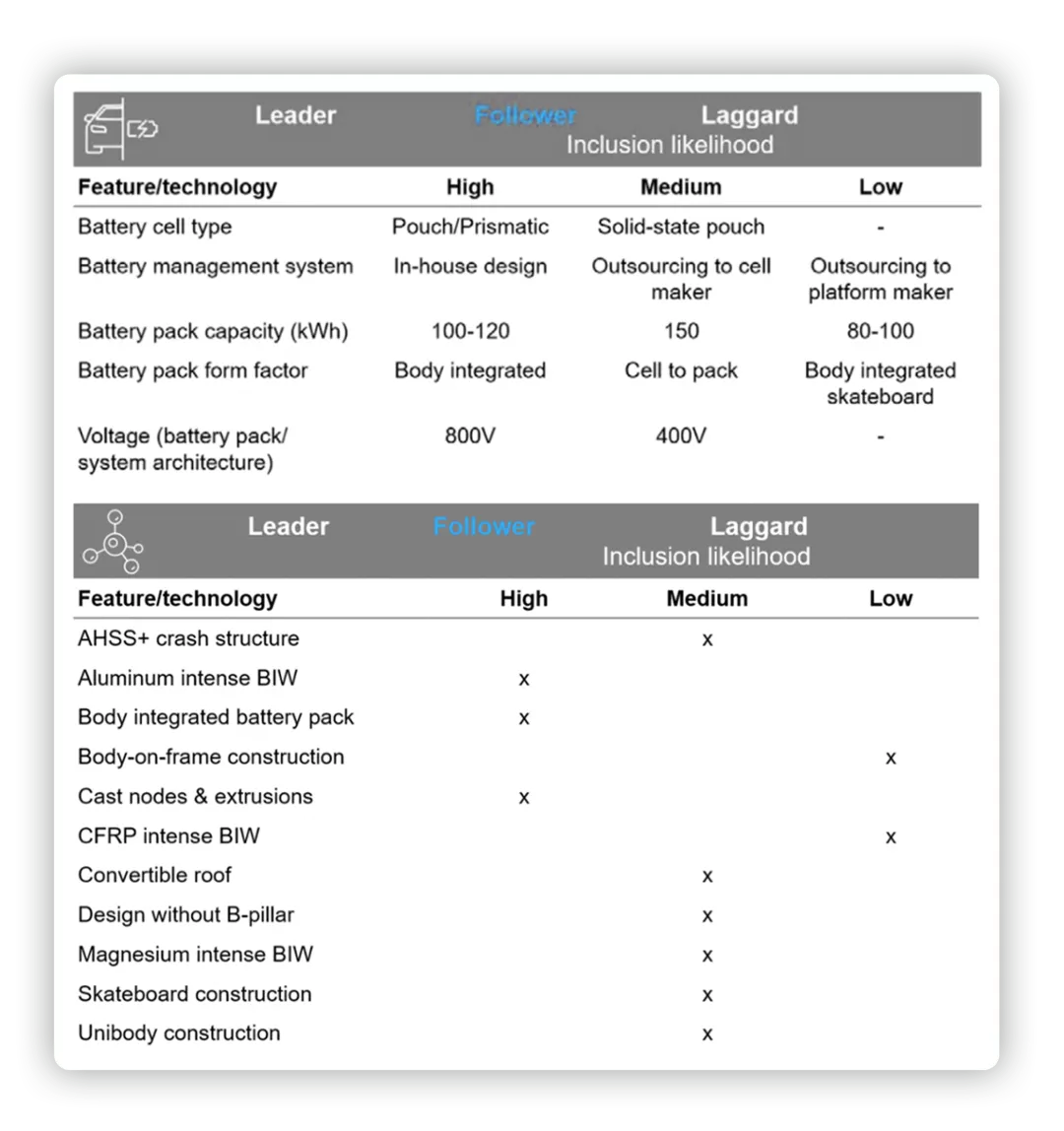
● Chips and Software
One major advantage of Apple is its ability to design its own chips. It’s highly probable that Apple would leverage its existing IP catalog to develop a specialized SoC for cars, focused on cabin and autonomous driving needs, as well as specialized IP for automotive process nodes.
Apple’s design philosophy is centered on tight integration of hardware, software, and services, with a strong emphasis on internal software functionality. This is a key advantage of all Apple products and their biggest selling point compared to other automotive products. Apple’s software strategy in the automotive field is expected to include deeper stack control compared to most other car manufacturers, including operating systems and middleware, as well as advanced analytics and connectivity features.
Note: The computing power competition for cabins has just begun, and after a large number of feature integrations, it can be anticipated that the computing power required for cars will be greater since smartphones have power consumption limitations, and cars will become the consumer product with the largest computing power demand.
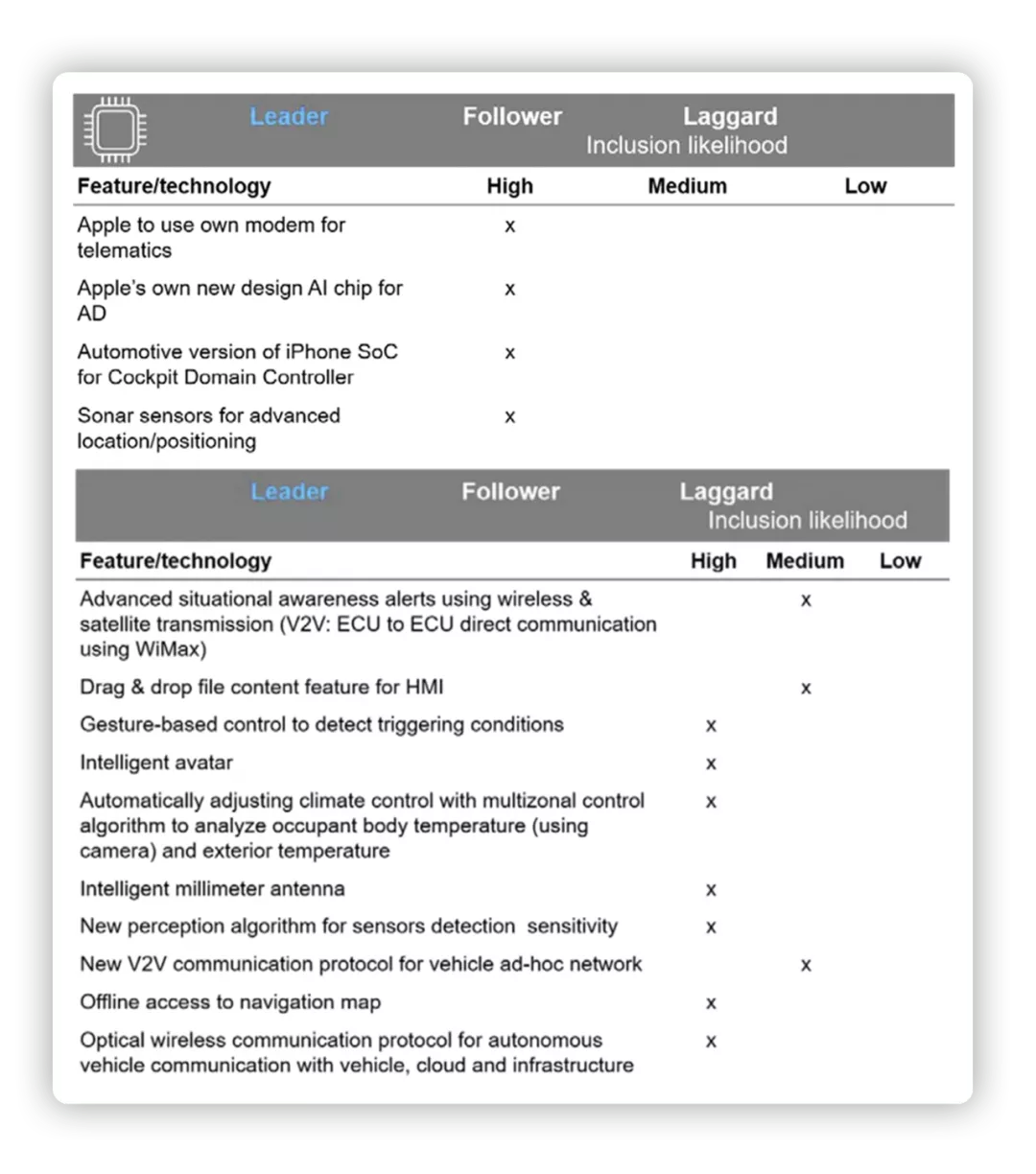
● UI/UX – Augmented Reality – Head-Up Display
Apple is likely to adopt a minimalistic, virtual UI/UX design to attract consumers, which includes reconfiguration of the cabin interaction (dashboard, center console, steering wheel).
Due to the large number of patents Apple holds in augmented reality technology and head-up displays, it is highly likely that the car will be equipped with an augmented reality head-up display, which will create a sleek user interface without a dashboard.
Note: Apple’s phones, Apple Watch, etc. can interact with the car as a whole.
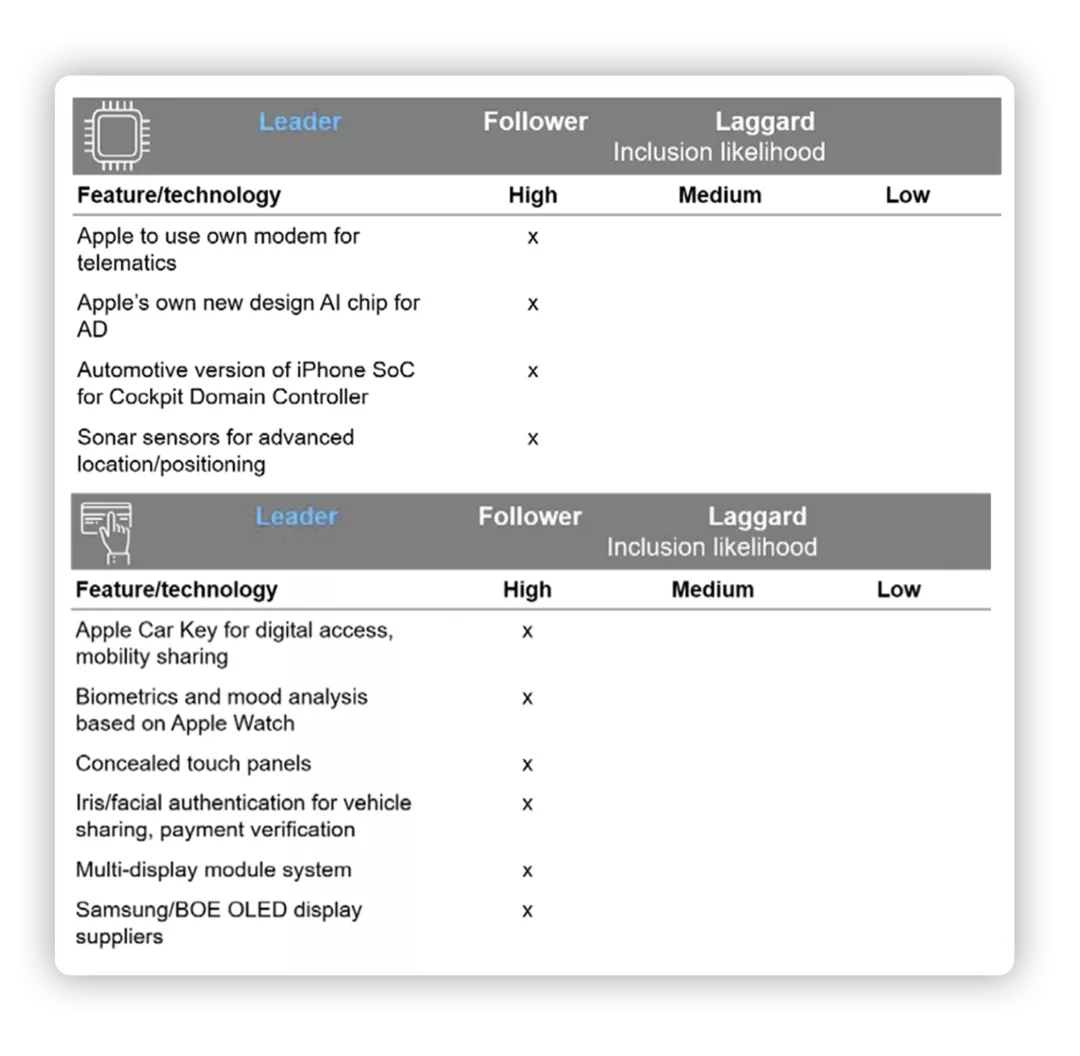
Summary: Currently, very little information has been disclosed in this field, and IHS’s speculations are just speculations. However, this is the first article from a consulting firm making guesses about Apple’s car, and readers can take a look when they have the chance. These guesses mainly focus on the extensions of Apple’s automotive advantages and ignore the internal innovation.
This article is a translation by ChatGPT of a Chinese report from 42HOW. If you have any questions about it, please email bd@42how.com.